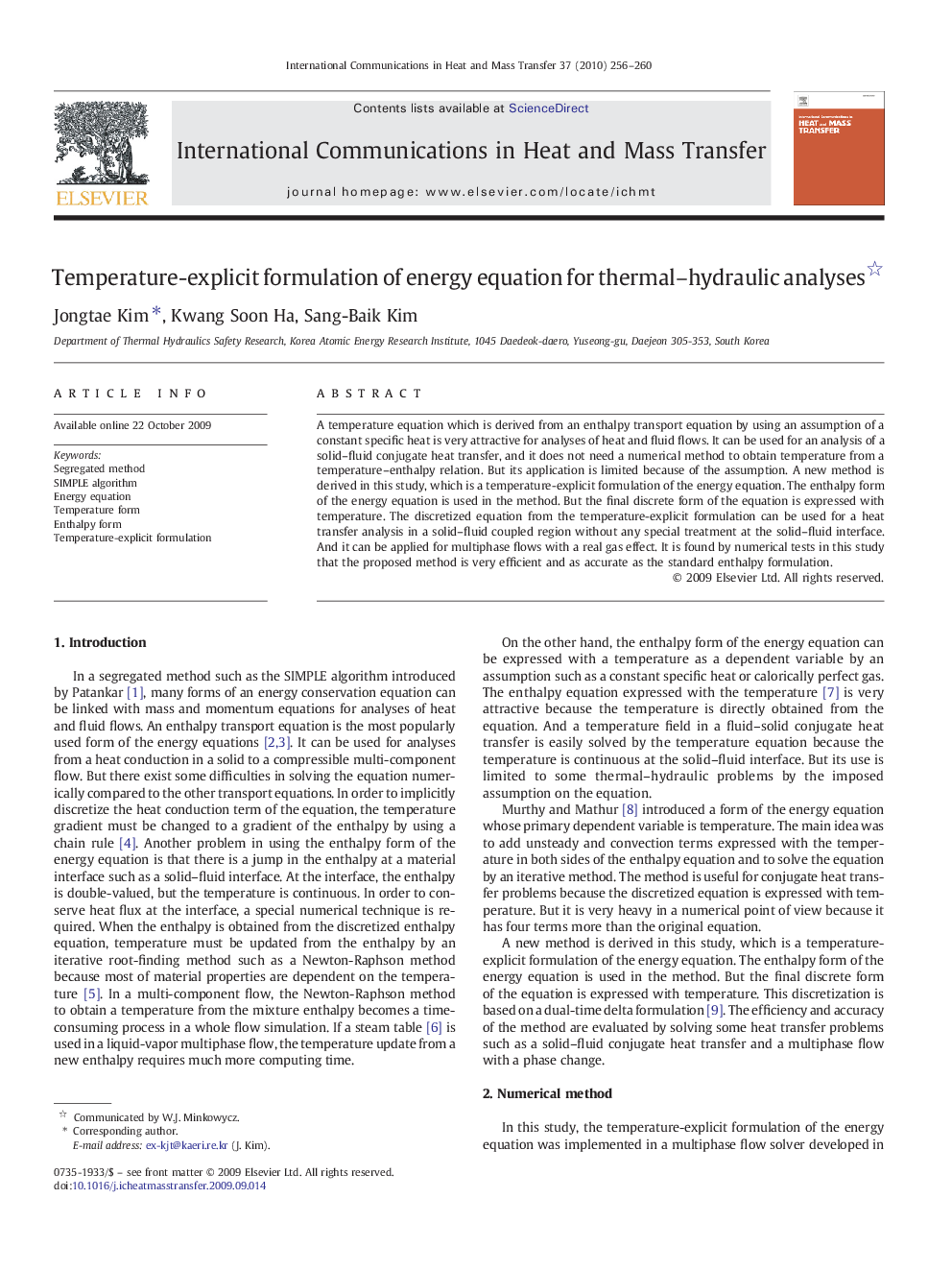| Article ID | Journal | Published Year | Pages | File Type |
|---|---|---|---|---|
| 654546 | International Communications in Heat and Mass Transfer | 2010 | 5 Pages |
A temperature equation which is derived from an enthalpy transport equation by using an assumption of a constant specific heat is very attractive for analyses of heat and fluid flows. It can be used for an analysis of a solid–fluid conjugate heat transfer, and it does not need a numerical method to obtain temperature from a temperature–enthalpy relation. But its application is limited because of the assumption. A new method is derived in this study, which is a temperature-explicit formulation of the energy equation. The enthalpy form of the energy equation is used in the method. But the final discrete form of the equation is expressed with temperature. The discretized equation from the temperature-explicit formulation can be used for a heat transfer analysis in a solid–fluid coupled region without any special treatment at the solid–fluid interface. And it can be applied for multiphase flows with a real gas effect. It is found by numerical tests in this study that the proposed method is very efficient and as accurate as the standard enthalpy formulation.
